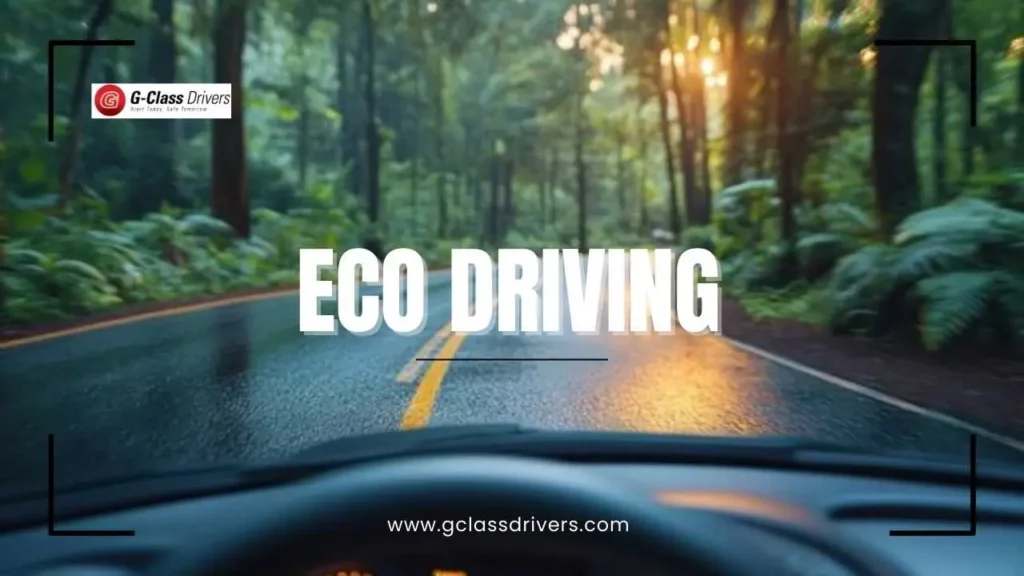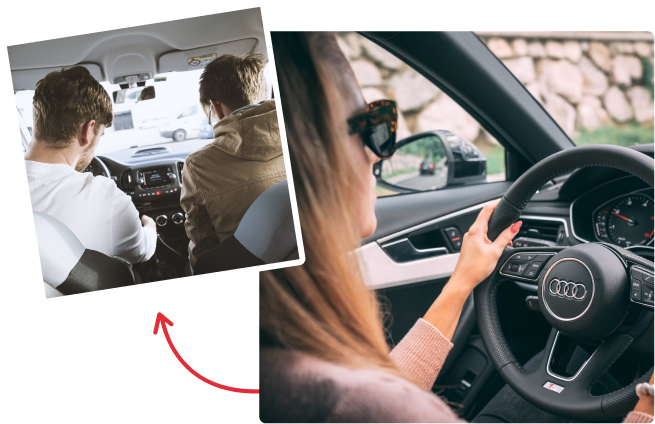Eco driving for commercial drivers is all about smarter driving techniques that save fuel, cut emissions and reduce cost. From steady speeds to route planning every small change can make a big difference. Fleet managers play key role by fostering a culture of sustainable driving and equipping drivers with the training needed. With this environmental impact can be reduced improve vehicle performance and save money. Start eco driving today for a cleaner, greener future!
What is Eco Driving?
Eco driving for commercial drivers is all about using driving techniques that maximize fuel efficiency & reduce environmental impact. By driving at steady speeds, accelerating smoothly and planning ahead drivers can cut fuel consumption. It’s the same driving skills drivers learn in drivers education but with an added focus on sustainability. For fleet drivers eco driving isn’t just a skill it’s a mindset that benefits both planet and the bottom line. Start eco driving today for a cleaner, more cost-effective future!
Eco Driving Techniques
While transitioning to an electric fleet may not be feasible for everyone there are still effective ways to make fleet more sustainable. Here are 3 eco driving techniques for commercial drivers to reduce fuel use and emissions:
Avoid Over Acceleration & Harsh Braking
Frequent acceleration and harsh braking waste fuel and increase vehicle wear. Driver training can help regulate speed and promote smoother, more efficient driving. Providing real-time in-cab feedback and using cruise control when possible can also reduce these behaviors, saving fuel and minimizing maintenance costs. Simple changes lead to a more efficient and sustainable fleet.
Prevent Idling for Fuel Savings
Idling wastes fuel and contributes to unnecessary CO2 emissions. Studies show that idling vehicles waste about 6 billion gallons of fuel annually. To reduce this, fleet drivers should turn off their engines if idling for more than a minute, especially in traffic. Providing external heat sources for rest periods can also help prevent idling for heating. By cutting down on idling fleets can save fuel and reduce environmental impact.
Optimized Route Planning for Efficiency
Fleet managers can enhance eco driving by planning efficient routes that avoid traffic, roadwork and unnecessary detours. Combining multiple trips into one reduces idle time and minimizes the time vehicles spend on road. Route optimization boosts fleet efficiency, save fuel, reduce emissions and improve overall performance.
Role of Technology in Eco-Driving
Following given points explain the main role of technology in eco driving for commercial drivers:
✔ Electric & Hybrid Vehicles: Lower emissions and fuel consumption with improving battery tech and charging infrastructure
✔ Predictive Maintenance: Use data and sensors to anticipate failures, reduce downtime, and optimize performance
✔ Driver Coaching Apps: Real-time feedback helps drivers improve eco-driving habits and save fuel
✔ Vehicle Design Innovations: Aerodynamic improvements and lighter materials boost fuel efficiency
✔ Advanced Traffic Management: Optimizes flow, reduces congestion, and lowers fuel consumption
✔ Renewable Energy Integration: Solar panels for EV charging and fleet facilities reduce carbon footprint
✔ Data-Driven Decisions: Optimize vehicle selection, route planning, and driver training for better fuel efficiency
Benefits of Eco Driving
Reduced Fuel Consumption
Eco driving techniques help reduce fuel usage by encouraging smoother driving leading to significant cost savings and less environmental impact
Lower Operating Cost
By cutting fuel consumption and reducing vehicle wear eco driving lowers overall operating costs including fuel expenses and maintenance.
Improved Vehicle Maintenance
Driving gently reduces strain on engines, brakes and transmissions leading to fewer repairs & longer vehicle lifespan
Extended Vehicle Lifespan
Eco driving practices reduce wear and tear on vehicles helping fleets maximize the life of each vehicle and avoid costly replacements
Enhanced Reputation
Fleets that adopt eco driving demonstrate a commitment to sustainability which can attract eco-conscious clients, partners and employees
Practical Eco-Driving Strategies
- Utilize Cruise Control: Helps maintain a steady speed on highways, reducing fuel consumption and engine strain
- Maintain Steady Speeds: Avoid sudden speed changes; smooth acceleration and deceleration improve fuel economy
- Avoid Unnecessary Idling: Turn off engine during long stops to save fuel and reduce emissions
- Monitor Tire Pressure: Properly inflated tires enhance fuel efficiency and ensure safer ride
- Conduct Pre-Trip Inspections: Check tires, oil levels and for any mechanical issues before starting any trip
- Plan Routes Efficiently: Choose the quickest, least congested routes to save fuel and time
- Optimize Load Distribution: Evenly distribute cargo to reduce vehicle strain and improve fuel efficiency
Wrapping It Up!
Eco driving for commercial drivers is a simple yet powerful way to improve fuel efficiency, reduce emissions & lower operating cost. By adopting smarter driving techniques and using technology, fleets can enhance vehicle performance. Whether it’s avoiding harsh braking, reducing idling or optimizing routes, every small change contributes to greener future. Start eco-driving today for cleaner & more cost effective tomorrow!
FAQs
What is eco-driving for commercial drivers?
Eco-driving for commercial drivers involves using driving techniques that maximize fuel efficiency, reduce emissions, and lower costs.
How can eco-driving reduce fuel consumption?
By maintaining steady speeds, accelerating smoothly, and avoiding unnecessary idling, fuel consumption is minimized.
Is eco-driving only for electric vehicles?
No, eco-driving techniques can be applied to any vehicle, including traditional internal combustion engine vehicles.
How can I reduce fuel consumption without changing my vehicle?
By adjusting driving habits, such as avoiding harsh acceleration and braking, and planning efficient routes.
What is the role of technology in eco-driving?
Technology, such as electric vehicles, predictive maintenance, and driver coaching apps, supports eco-driving by optimizing vehicle performance and reducing fuel use.
Does eco-driving really save money?
Yes, by reducing fuel consumption and maintenance costs, eco-driving helps lower overall operating expenses.
How can fleet managers promote eco-driving?
Through training, providing real-time feedback, and implementing route optimization strategies.
What are the benefits of eco-driving?
Reduced fuel consumption, lower operating costs, improved vehicle maintenance, and a longer vehicle lifespan.
How can I optimize my vehicle’s load for better fuel efficiency?
By ensuring the load is evenly distributed and securely fastened to reduce strain on the vehicle.
How long should I wait before turning off the engine when idling?
Turn off the engine if you expect to be idle for more than one minute to save fuel and reduce emissions.





